It’s become something of a series.
A few years ago I set off under the Westchester Avenue El between Parkchester and Pelham Bay Park in the Bronx, and finished off my journey “under the 6” some time later. Then, Sergey wrote about Livonia Avenue and I walked the length of New Utrecht Avenue, both of which are mostly covered by elevated trains. I had previously done Fulton Street in Cypress Hills and Jamaica Avenue in Woodhaven. My very first ForgottenTour in June 1999 explored the underside of Brooklyn’s Broadway. Part of my Myrtle Avenue extravaganza was under the section that still had an elevated train.
I have yet to do the other “elled” section of Westchester Avenue under the #2 train, as well as White Plains Road that supports the #2 and #5. Had there been a Forgotten New York in the 1930s, there would have been pages on the 2nd, 3rd, 6th and 9th Avenue Els. As it is now, only a very small section of el still stands in Manhattan, but it runs over three separate streets — that will be the subject of a walk I did recently in Manhattan and the Bronx.
Why els? When you were a kid, I’m sure you used to upend rocks or logs in the park to see what scurried out when you did — ants, worms, etc. that are sources of endless fascination for kids. For me, now writing in my 50s, fascination has always come from seeing anomalies and leftovers from previous eras that somehow have survived under els where city agencies can’t see them such as signs, lamps and even unchanged stores and businesses. Thus, I walk in darkness, under the els…
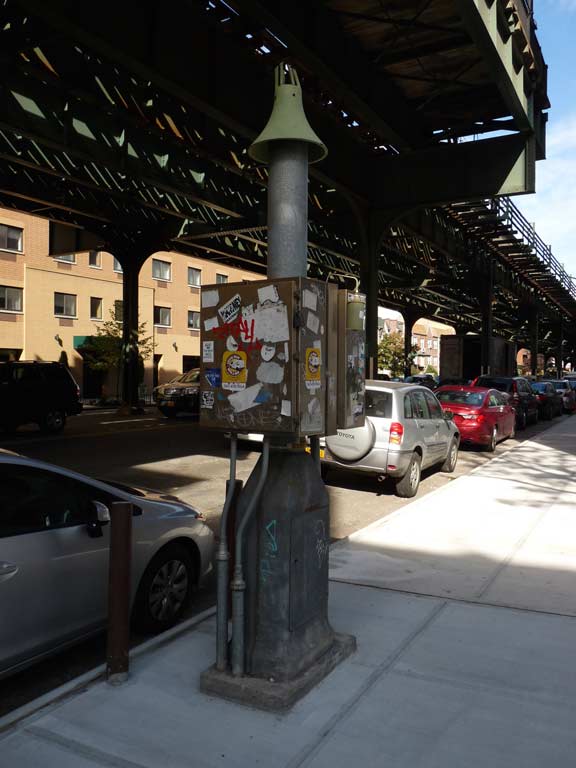
A Dugong-style vent (named for its finned aspect), which allows underground gases to escape safely into the atmosphere, has been installed on 31st Street north of Broadway.
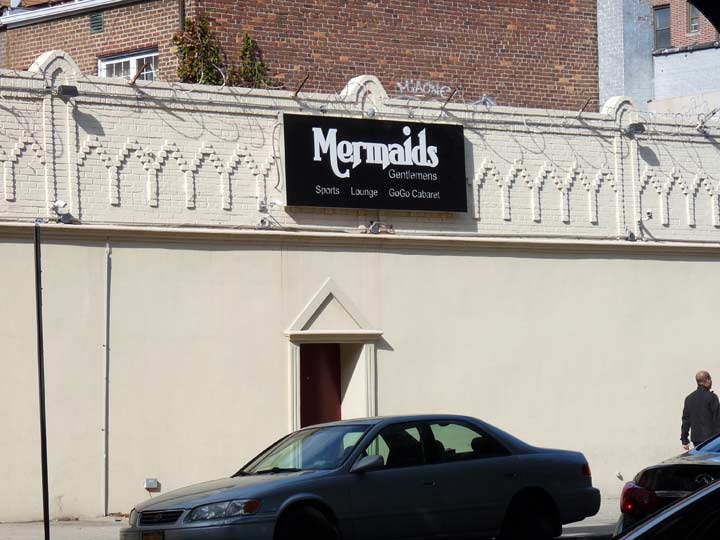
Mermaids usually perform in aquariums like Weeki Watchee, but they have been increasingly employed at strip joints and “gentlemen’s clubs” — their tails are prehensile and surprisingly strong and can expertly wrap around a stripper pole.

Mansion, 31st Avenue east of 31st Street. This must have been magnificent before it was shrouded under aluminum siding; some of its old grandeur shines through.
As it turns out this is the former home of “The Father of American Musical Education”, Ferdinand Quentin Dulcken (1837-1901) and is in danger of imminent demolition as of March 2017. Queens Crap has a then-and-now comparison; it was indeed grand in previous years.
Though the Greek Orthodox congregation of St. Demetrios has been in existence since 1927, its neo-Byzantine cathedral at 30th Drive and 31st Street was completed in 1975. The titular saint was a soldier and Christian martyr in the 4th century in the Greek province of Thessalonica, which was then occupied by the Roman Empire.
The Taiwan Union Christian Church was founded in 1970 and occupied the former Second Reformed Church of Astoria church building beginning in 1983. Information on the building is sketchy but I do know that the Second Reformed Church was founded in 1859. If this is its original church building it would be one of the oldest structures in Astoria. I like the way some of the old detailing has been retained, such as the narrow timbers at the entrance. There is no visible cornerstone. Any info? kevinjudewalsh@gmail.com
The present building goes back to 1867 according to the American Guild of Organists.
Brick dwelling at 30-33 31st Street– still has its original doorway. Check out the detailing!
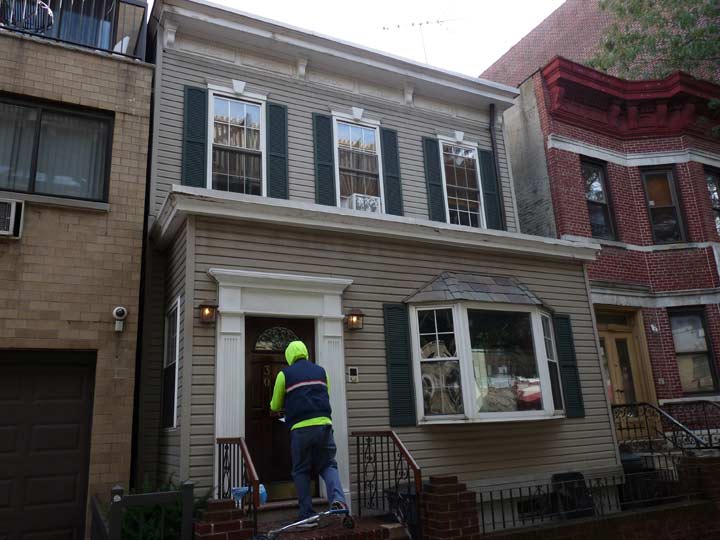
Although it’s has a residing job and a new polygonal oriel window installed, this dwelling could be of the same vintage as the Second Reformed Church.
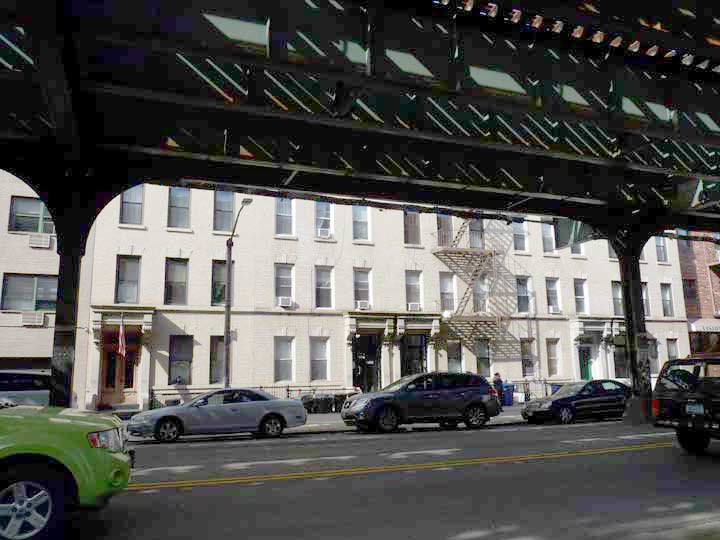
The framing appearance produced by the el pillar brackets comes into play again here. These are some old school apartment buildings going back to 1915 or so.
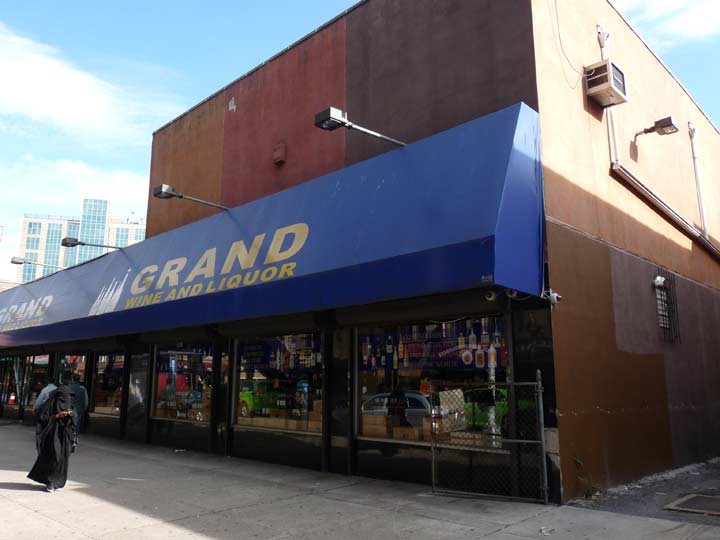
Grand Wine and Liquor, 31st Street south of 30th Avenue. The awning sign is practically new and nothing special. Why am I showing it? That’s no random act of naming and there’s a specific reason why “Grand” was selected as the name of the store.
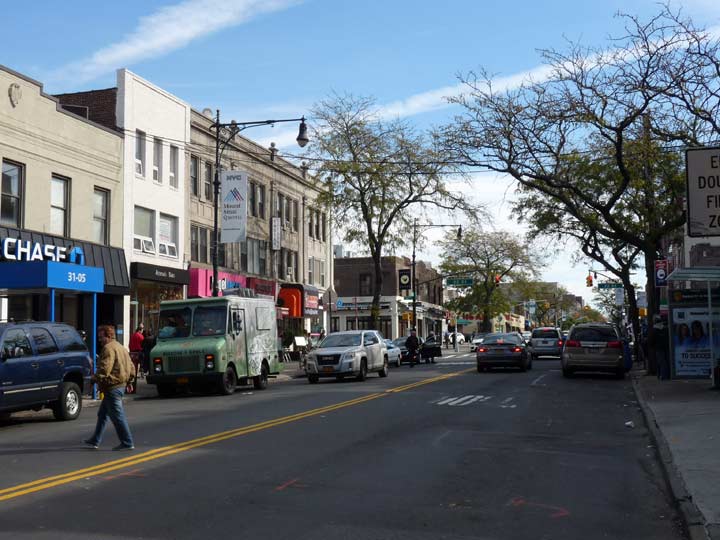
30th Avenue, one of the major shopping drags in Astoria, is served by the 30th Avenue/Grand Avenue station. This can be a bit confusing, since Queens’ present-day Grand Avenue runs through Maspeth and Elmhurst, a good 5 miles away.
The reason for the station and liquor store name (as well as the Grand Court apartment house at 30th and Steinway Street) is that before most Queens streets received numbers, 30th Avenue was called Grand Avenue, and the Maspeth/Elmhurst Grand Avenue was called Grand Street; it’s an eastern extension of Williamsburg’s Grand Street. Flushing Avenue, which runs through parts of Brooklyn and Queens (but not Flushing), intersects a Grand Avenue in Clinton Hill and ends at another one in Maspeth!
This kind of thing fascinates me to no end….

Newtown Avenue intersects 31st Street at an angle, meaning it defies the street grid.
Like a number of streets and roads in NYC, Newtown Road and Newtown Avenue aren’t named for the neighborhoods where they are, but for the neighborhood they go to. And, like a number of NYC streets that run aslant the overall grid, they’re two of the older roads in the area. Both Netwown Avenue and Road comprise an Indian trail that became the main road to early Astoria settler William Hallett’s farm in the mid-17th Century, and to the treacherous Hell Gate, the East River crossing to Manhattan. Its eastern stretch that ended in the heart of Newtown, now Elmhurst, was called Hurlgate, or Hellgate, Ferry Road; later named for the town through which it passed, becoming Woodside Avenue.
Newtown Avenue and Road were once one road, but today Newtown Avenue runs from Astoria Square to 30th Avenue and 33rd Street, while Newtown Road picks up at 30th Avenue east of Steinway Street and then runs to the confluence of Northern Boulevard and Woodside Avenue.
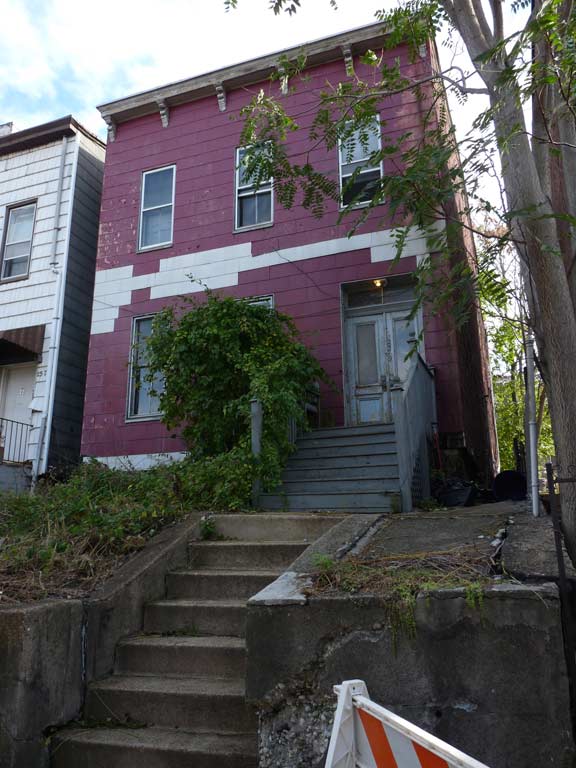
Another pair of ancient homes on 31st north of 28th Avenue. These are set on slight slopes and so require staircases. The front lawns are unusual and likely predate the el (which was completed in 1920). Note original door.
Columbus Square (modern signage calls it Columbus Triangle) is where Astoria Boulevard, coming in from the west, becomes the Grand Central Parkway service road. West of here, Hoyt Avenue North and South is the service road. Sculpted by artist Angelo Racioppi, the statue depicting Christopher Columbus, the Italian voyager sailing for Spain, seeking an easier route to the Far East was dedicated on October 12, 1941.
The statue was actually completed before WWII broke out but was never erected because money could not be found by sponsoring Italian-American neighborhood associations for its base. It was unveiled here October 12, 1941, but spent the war years in the basement of Queens Borough Hall lest it be removed for use in the war effort. It was restored to its position in 1945.
The last two stations on the north end of the Astoria Line are unusual. When the Grand Central Parkway, the approach road to the Triboro (RFK) Bridge, was constructed in the 1930s, extended walkways were installed to allow passengers to get off on Astoria Boulevard; presumably, the old exits were on a section of 31st Street that is now on the overpass crossing the GCP.
The station has a center platform and, provided you’re in the right position, a picture postcard view of the Triboro is available.
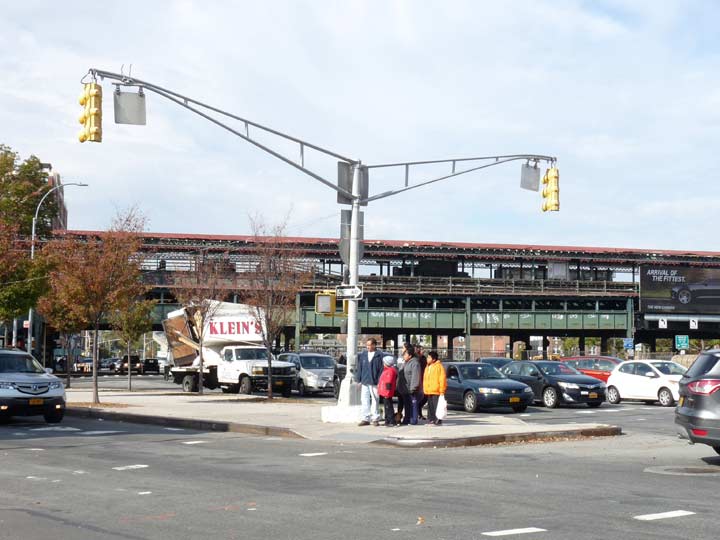
I’m sure you’re familiar with NYC’s guy-wired standard issue intersection stoplights… they’ve been installed by the thousands since the mid-1950s. Rarely, though, this alternate design that resembles stoplight masts in other cities is used for extra-wide intersections.

The Neptune Diner on the NE corner of 31st and Hoyt Avenue North was voted “best burger” by NY Daily News readers during the 1990s. I have been in just once — it’s more of a “restaurant” experience than a diner experience — slightly more formal, though no dress code is required. Yelp.com reviews are middling.
While shooting The Hunger, a high-concept vampire flick, in 1982, David Bowie and Catherine Deneuve dropped in.
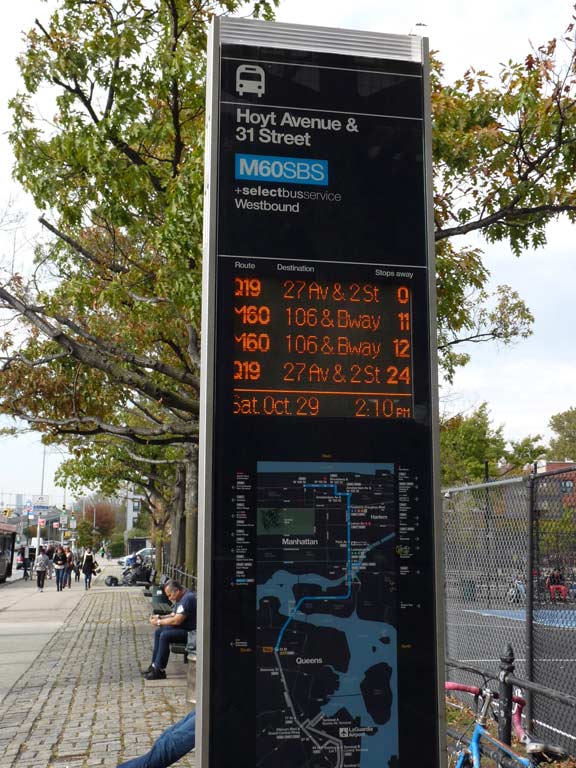
A bus tracker for the M60 bus, which connects Harlem with LaGuardia Airport via the Triboro, and the Q19, which runs chiefly on Astoria Boulevard, has been installed on Hoyt Avenue North west of 31st Street. Hope you brought a paper or some kind of reading device if you want to catch the Q19.
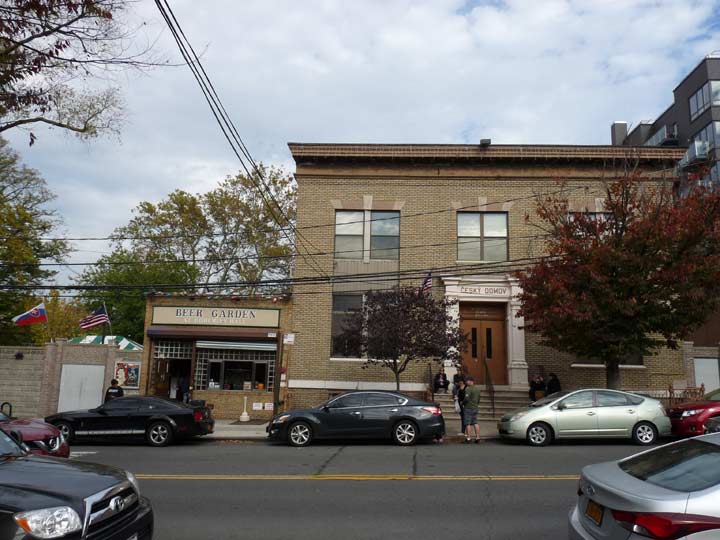
I profiled Bohemian Hall, 24th Avenue just west of 31st Street, for many years NYC’s only remaining outdoor beer garden, just recently in FNY. It’s been a favorite joint for years.
Old school apartment building, likely predating the el, on 31st between 23rd Road and 23rd Avenue. Plenty of extra expense must have been used for those elaborate treatments around the entrance and second floor window. I wonder if there’s a story behind those.

Another standalone residence of presumed great age on the west side of 31st near 23rd Avenue. The front lawn leaves room for…
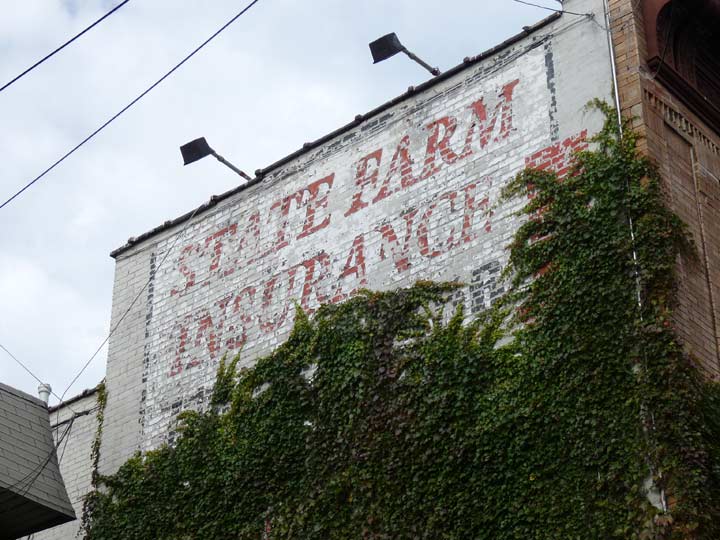
… a painted ad for State Farm Insurance on the adjacent apartment building. There is no longer an insurance office on the ground floor. The insurance firm was founded in Illinois by retired farmer George J. Mecherle in 1922; in 1971, Barry Manilow composed its ubiquitous TV/radio jingle, “Like a Good Neighbor, State Farm Is There.”

One of the most dynamic (in my opinion) subway terminals in NYC us the Ditmars Boulevard station, as it is canopied by one of the massive concrete arches that supports the railroad tracks bringing train traffic to and from the Hell Gate Bridge. Surrounding streets are also covered by similar arches of various heights, and I photographed most of them for this FNY page.
Both the elevated and the Hell’s Gate Bridge were built in the mid-to-late 1910s, with the Hell’s Gate Bridge opening just a bit earlier than the el, 3/9/17 versus the el’s 7/19/17. The Pennyslvania RR and the BMT/IRT must have communicated during the construction process to assure adequate clearances.
On both sides of the arch, Ecuadorian immigrant graffiti artist Sandra Fabara, better known as Lady Pink, worked with local kids to produce two murals, one depicting Native Americans before the arrival of Europeans and the other loosely showing “Great American art and culture.” Lady Pink’s own works have appeared from time to time all over the city.
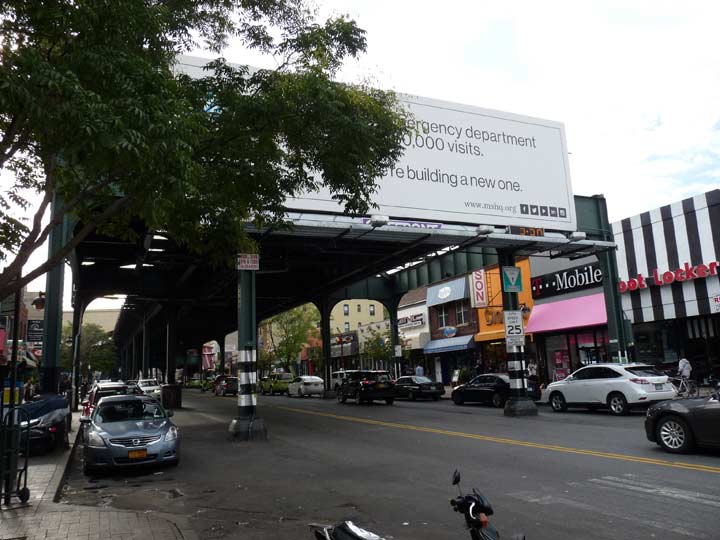
The Astoria El ends midway between 23rd Avenue and Ditmars Boulevard, which stands in for 22nd Avenue (coincidentally, in Brooklyn, 22nd Avenue is replaced by Bay Parkway). From time to time, there have been calls for an extension of the el north on 31st Street and then through the Con Edison power plant area to LaGuardia Airport, but these have always been negated by locals and their political representatives who fear too much noise and the shadows produced by elevated structures.
El construction has come a long way since then — think of the Airtrain elevated structure on the Van Wyck Expressway for a modern example. But opinions have held firm and such an el extension to LGA will likely never happen.

Ditmars Boulevard, named for Abram Ditmars, first mayor of Long Island City, NY elected in 1870, runs from the Hell Gate waterfront to Astoria Boulevard and 112th Street, paralleling Grand Central Parkway and LGA for the eastern half of its route. It has some history and secrets, as I showed on this FNY page.

I wasn’t done walking — 31st Street from Queensboro to Ditmars isn’t that long — and set off east on 23rd Avenue with my eventual destination being the IND station at Steinway Street (which, of course, wasn’t running locally on the weekend; I got the Q18 on 30th Avenue, arriving just in time to see the bus leaving before I could get there — which meant that the next scheduled bus would not appear and I would have to wait 45 minutes for the one after that. So much of my life is scripted, you’d think Vince McMahon of the WWE was pulling the strings someplace.
Tammany Hall was an organization associated with the Democratic Party that dominated NYC politics for about a century, from the 1830s through the 1930s. The name was a bowdlerization of the name of a (likely fictional) Indian chief. Another “creative” misspelling occurs here on a very old sign at the old HQ of the Taminent Democratic Club at 23rd Avenue and secreted under the Amtrak RR trestle at 32nd Street.

Here’s the Amtrak trestle in all of its faded magenta glory at 23rd Avenue and 33rd Street (it received a bright magenta paint job in the 1990s that immediately started to fade).
I could not resist getting several photos of the Hell Gate arches at 32nd and 34th Streets. In my opinion they should be named New York City Landmarks.
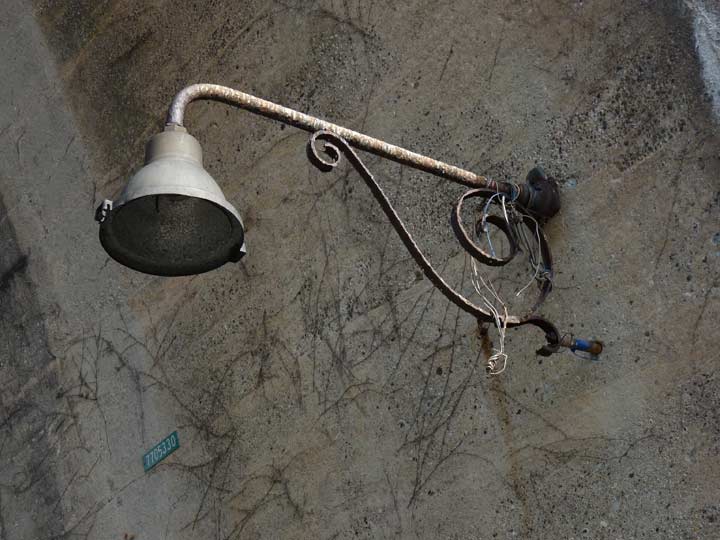
Coincidentally, I could not resist snapping these rusted, scrolled iron wall lamps that accompany most of the arches. They once lit the sidewalks under the arches, but if I can hazard a guess, haven’t worked since the 1960s or so.
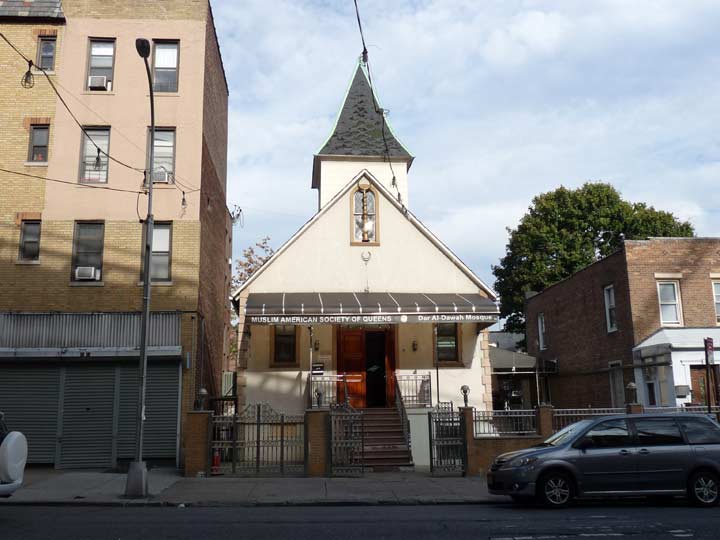
The Queens branch of the Muslim American Society is located at the Dar-Al-Dawah Mosque in a former Christian church at 23rd Avenue between 33rd and 34th Streets.
The Greek Orthodox Church of St. Irene Chrysovalantou, 23rd Avenue between 36th and 37th Streets. The saint was a 9th Century miracle worker in the Byzantine Empire.
There are two remnants of the old Astoria Silk Works on 23rd Avenue between 38th and Steinway Streets. The Mattman brothers established the silk works factory here in 1888. Jacob Ruppert, beer brewer and NY Yankees owner, was president in the early 20th Century. The works had 36 looms and employed 150 people, making velvets, plushes and dyed pieces, making $8 a week, a decent figure in the 1890s. In the 1920s, ASW expanded to a mill near West Point, but a fire shut down that location in the 1950s.
A tall brick factory building, as well as a smokestack bearing the initials ASW survive. Coincidentally, or perhaps not, Astoria Sound Works is now on the site.
Completely disguised after decades after their initial purpose ceased, a pair of saloon/restaurants serving the Silk Works and nearby Steinway Piano Factory workers face each other on Steinway Street on the corner of 23rd Avenue: the Joseph Hoenlin and Otto Fuhlrott Hotel/Saloons.
Tiny Sound Street runs just one block, one-way south between 23rd Avenue and Astoria Boulevard. Nevertheless, it’s an important conduit, since it brings traffic to an overpass over the Grand Central Parkway. Together, with 23rd Road, it’s a remnant of a former ancient settlement, East Astoria.
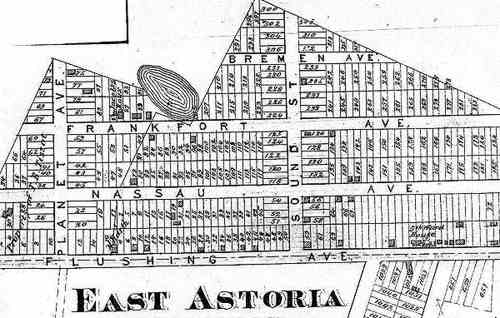
East Astoria was a very small community located on Astoria’s eastern edge, about where Astoria Boulevard and Steinway Street — 43rd Street are now. It was developed earlier than the surrounding area, and when more streets were finally cut through, East Astoria’s small street grid survived. North-south streets were Planet Avenue and Sound Street, while east-west streets were Bremen Avenue, Frankfort Avenue (both of course, a sign of Astoria’s mostly German population during the 19th and early 20th Centuries) as well as Nassau and Flushing Avenues.
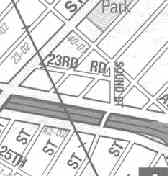
Over the decades, surrounding development swallowed up East Astoria, and its death knell as a separate community came when Robert Moses rammed through the Grand Central Parkway connection to the Triborough Bridge.
And yet…East Astoria hasn’t completely been killed. As you can tell from the present-day Hagstrom, two streets defy the grid to this day, 23rd Road and Sound Street.
Sound Street has never been completely conquered. Indeed… it’s important today, as it provides a means for traffic to cross the GCP.
Flushing Avenue became Astoria Boulevard, and Nassau Avenue was demolished for the GCP. Planet and Bremen Avenues have disappeared.
Eve today, there’s something … different about 23rd Road between Steinway and 42nd Streets. In spots, there is no sidewalk, and on some corners, the Department of Transportation installs no street signs. To an outsider, it seems like a ghost street, and in a way it is — a ghost remanant of a small town.
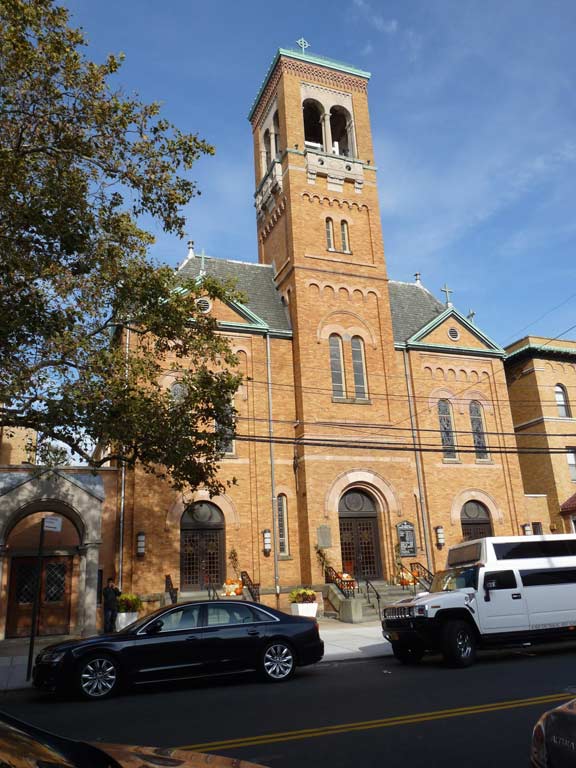
It was time to kick it in the head for the day and, before my interminable wait at the bus stop, I regarded one of Queens’ most gorgeous brick churches, St. Joseph’s R.C. Church, 30th Avenue between 43rd and 44th Streets. The church was organized in 1877 when there was a large amount of German Catholics in the region (the Steinways had set up their piano manufacturing plant in Astoria that decade), with the first wooden structure erected in 1880, and the current building with its massive campanile (bell tower) in 1906. Catholic churches seem to build the equivalents of small towns for their parishes, and the church is surrounded by a school rectory and convent.
11/13/16

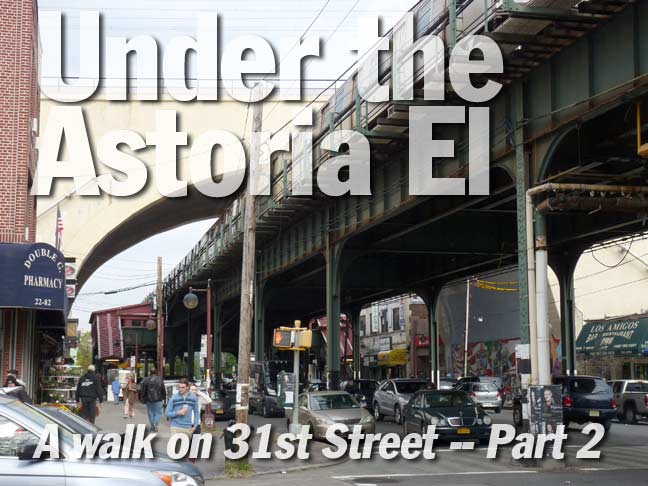
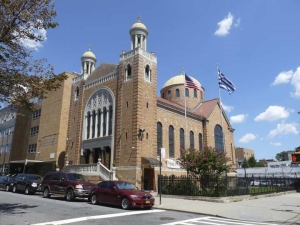
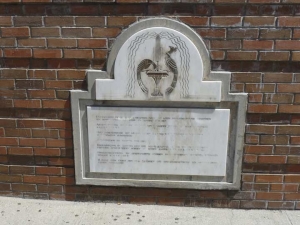
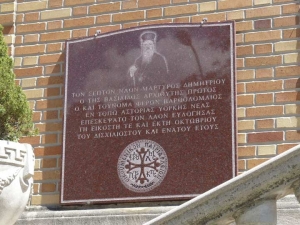
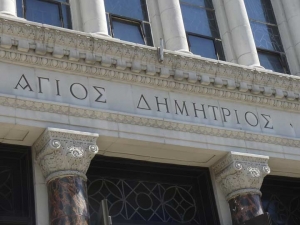


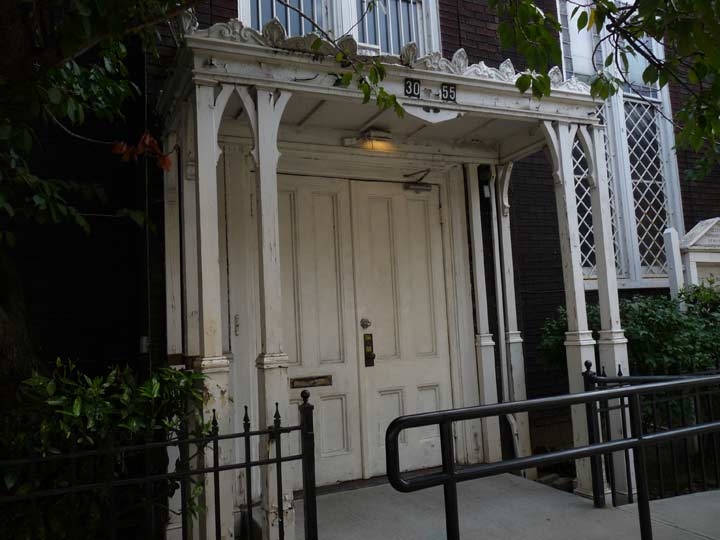
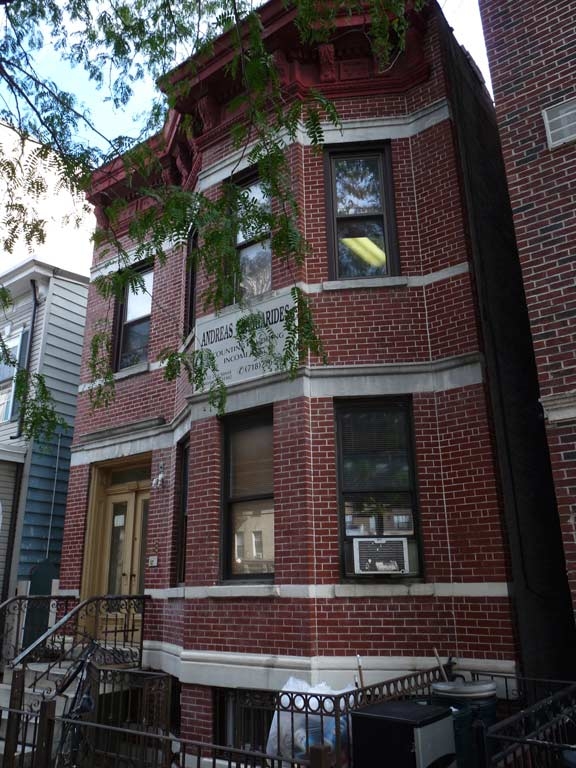
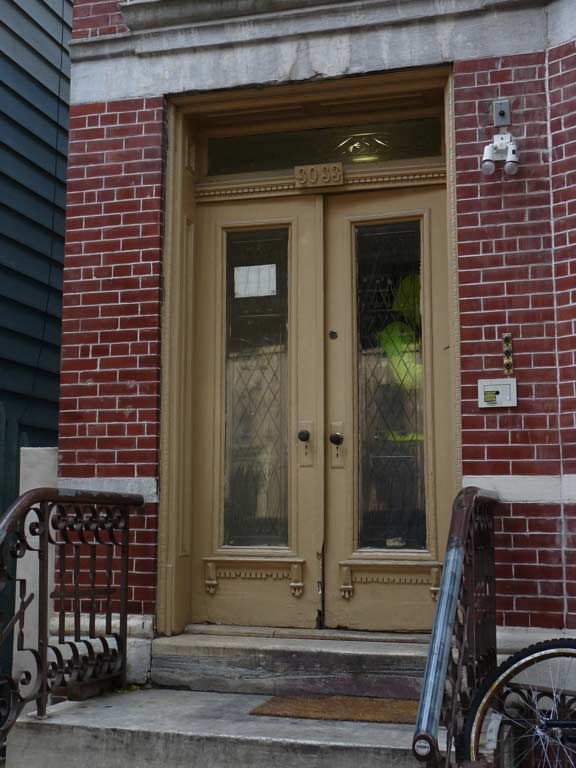

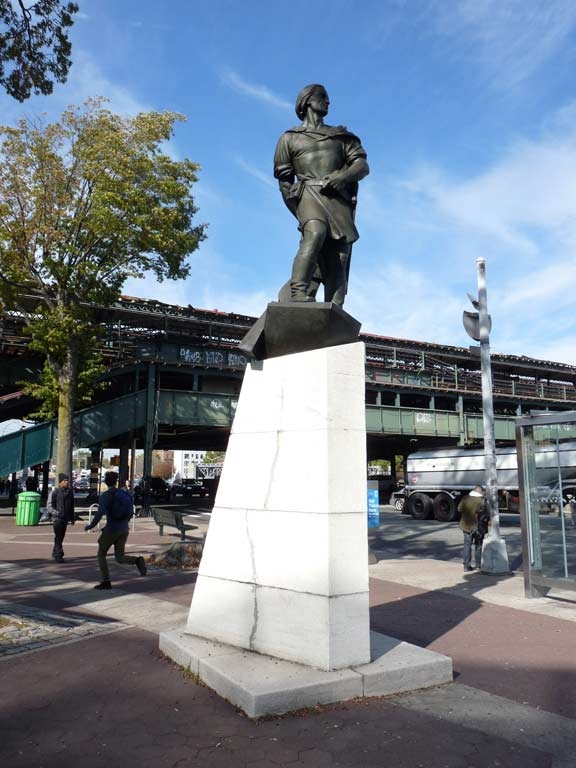
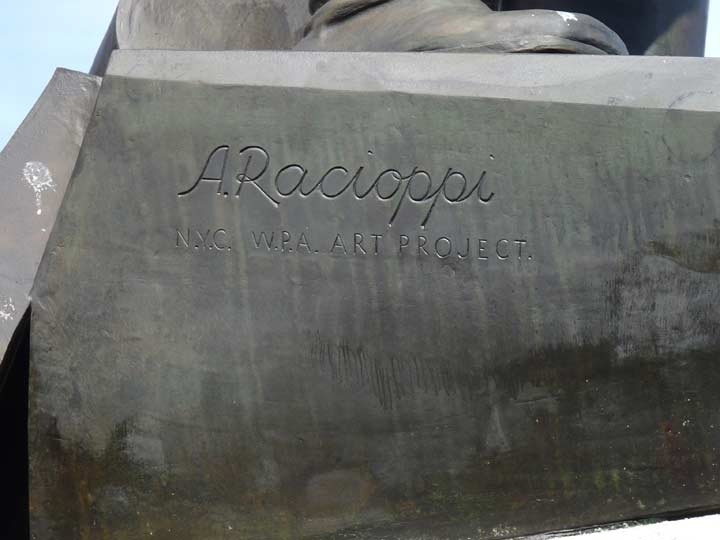

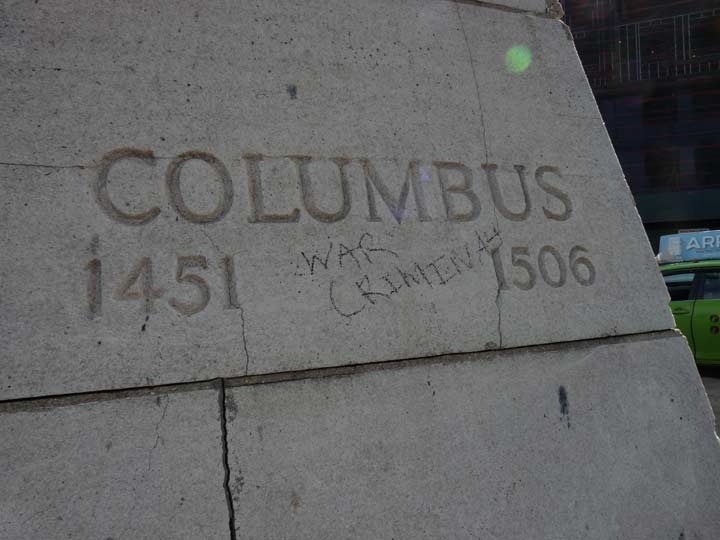

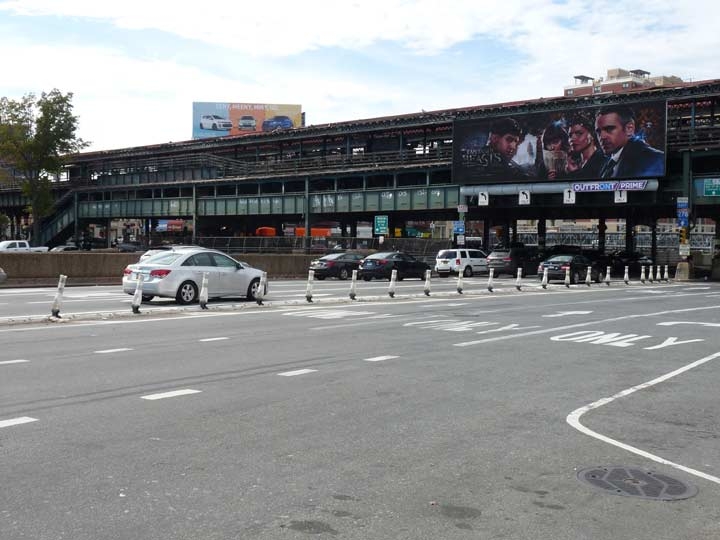
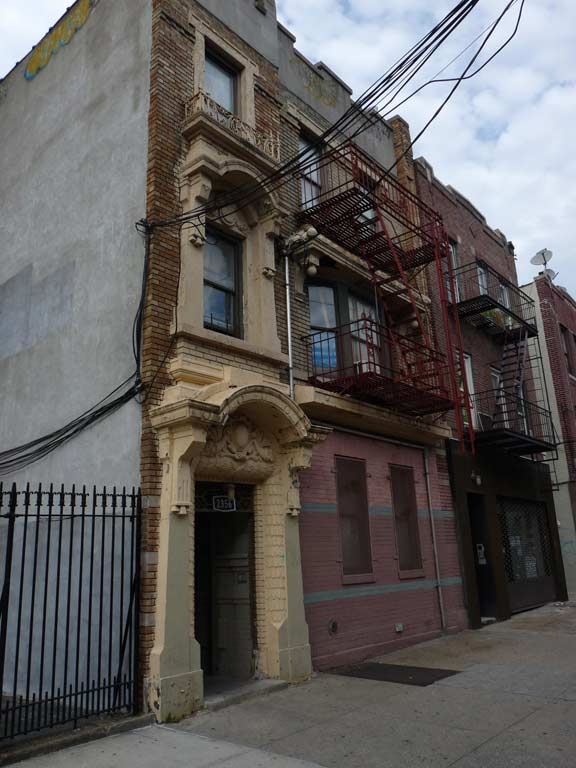
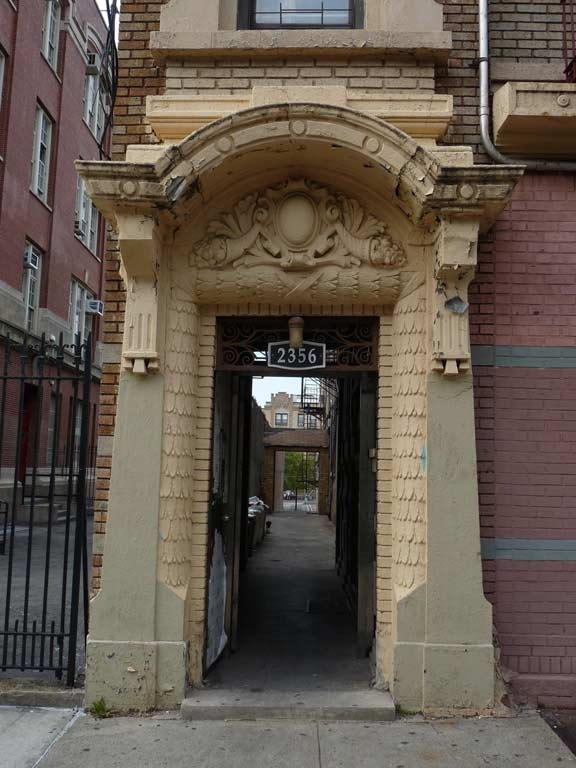

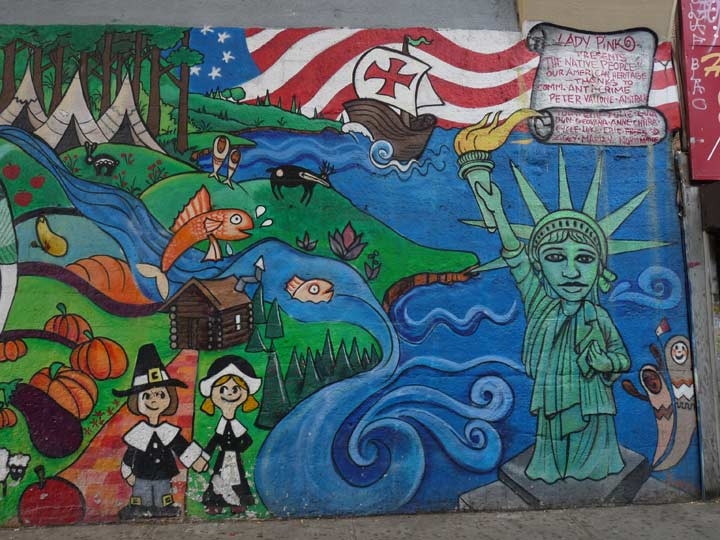
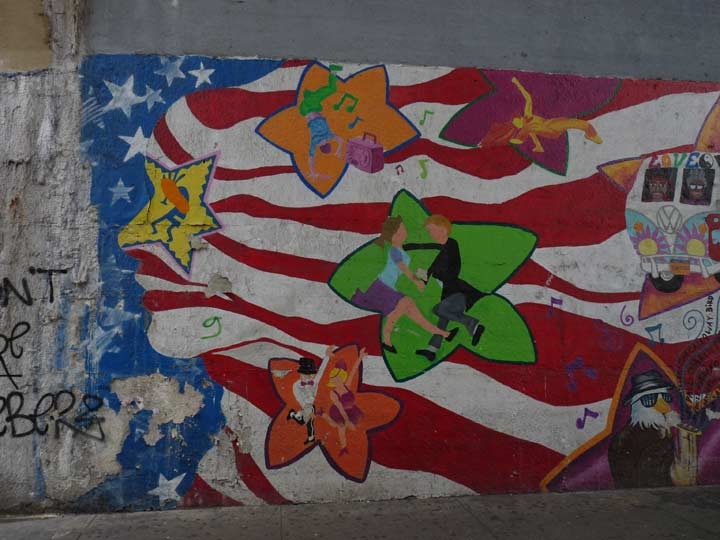

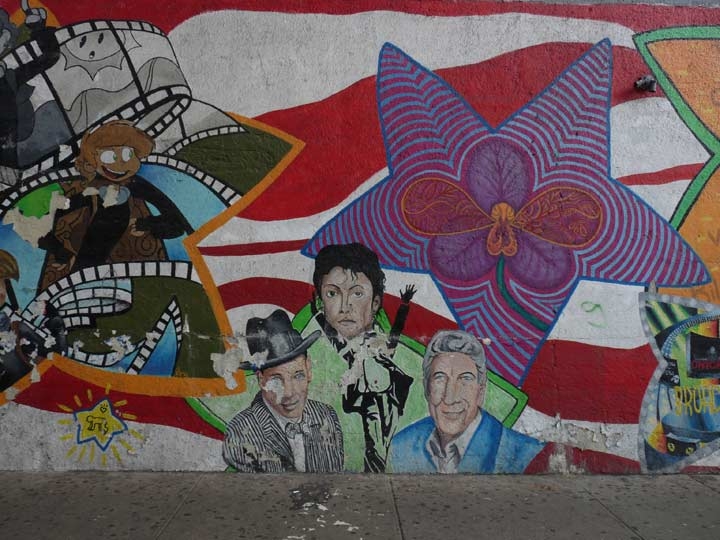
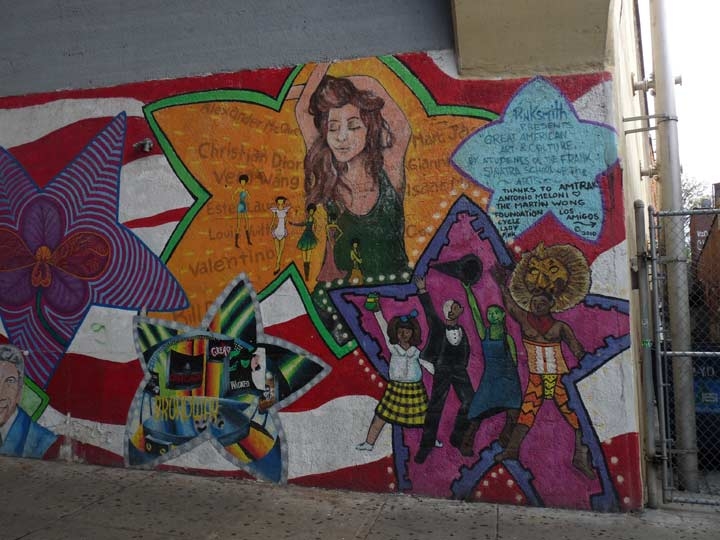
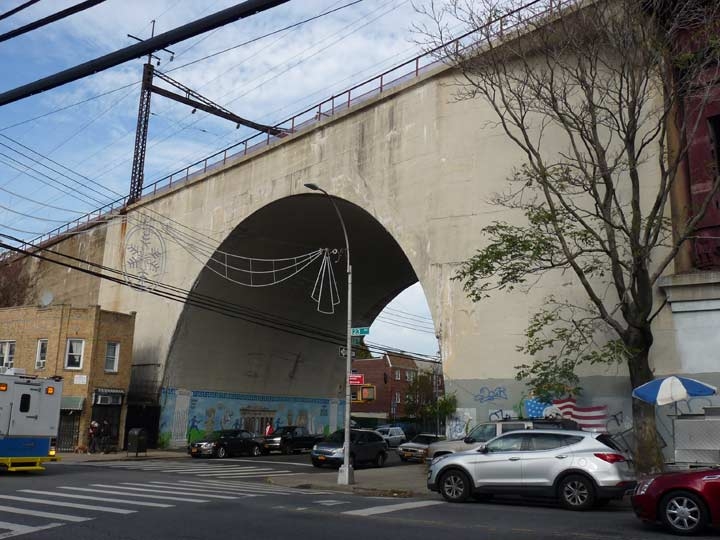
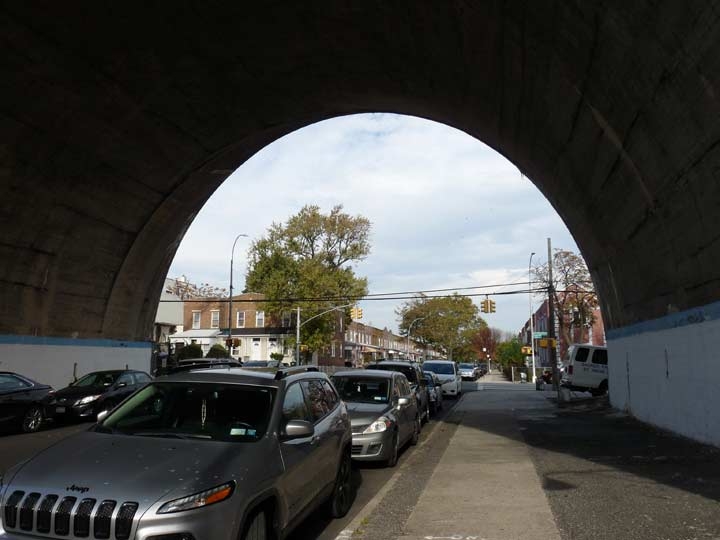
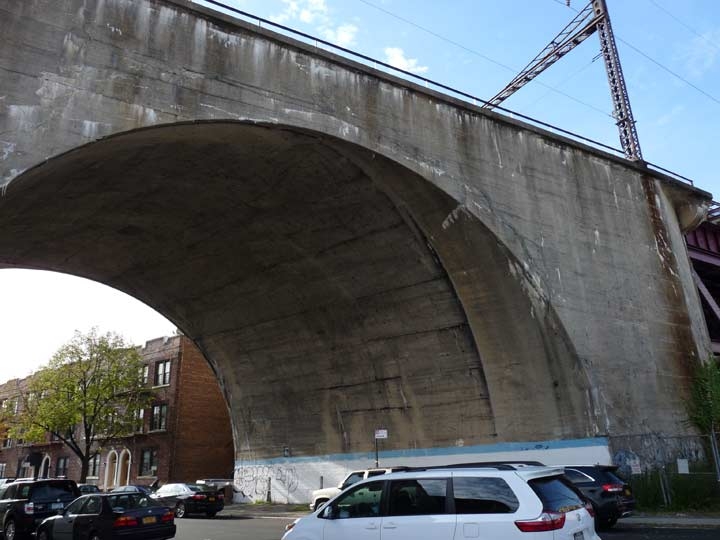
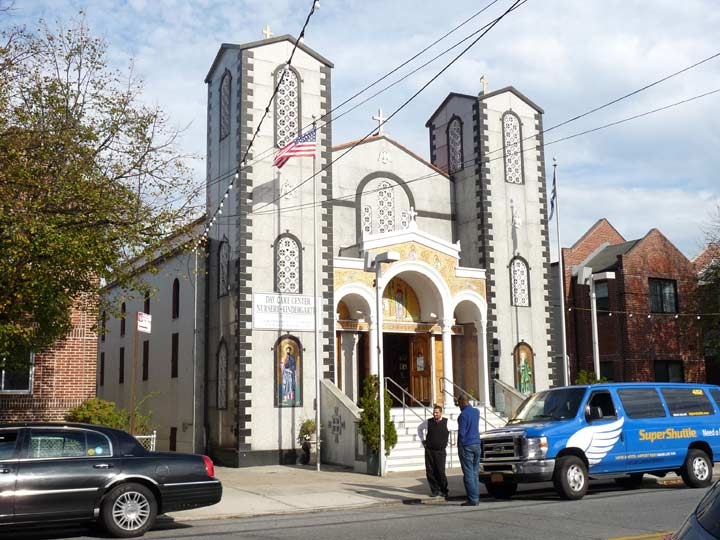
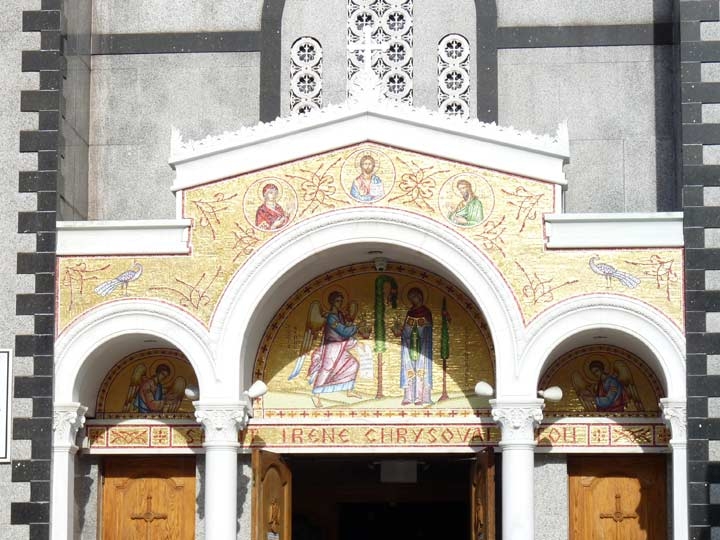
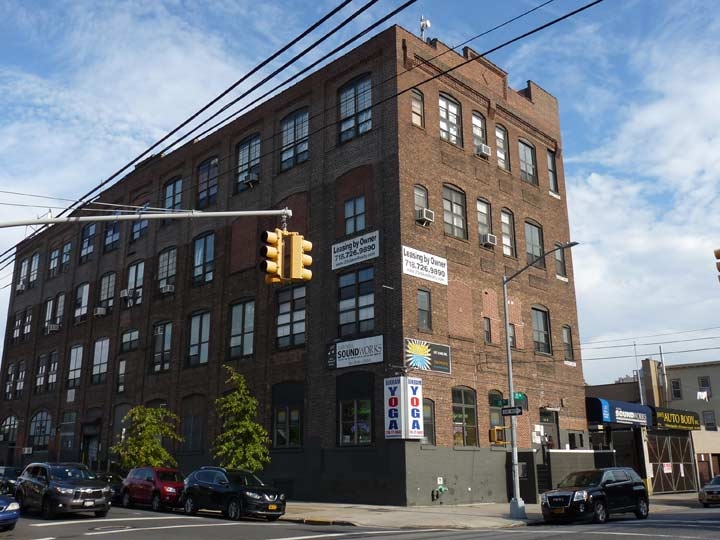

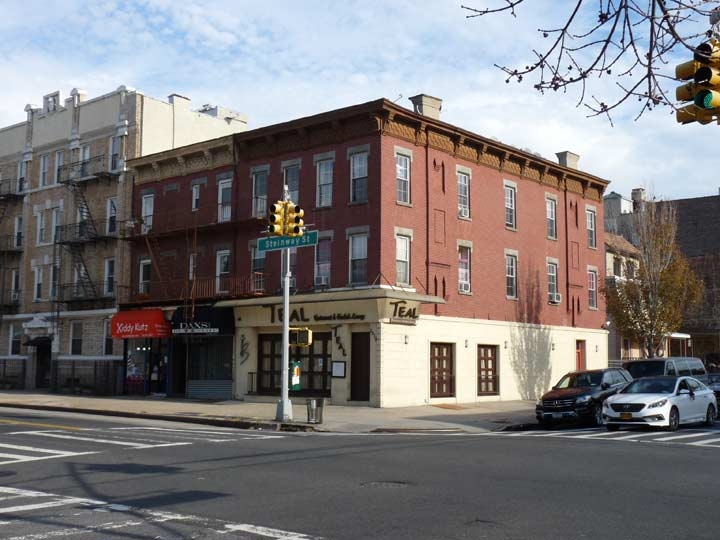

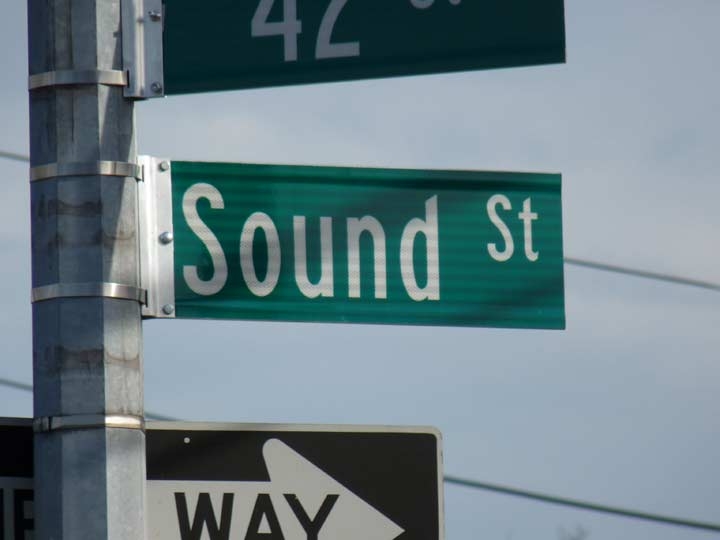
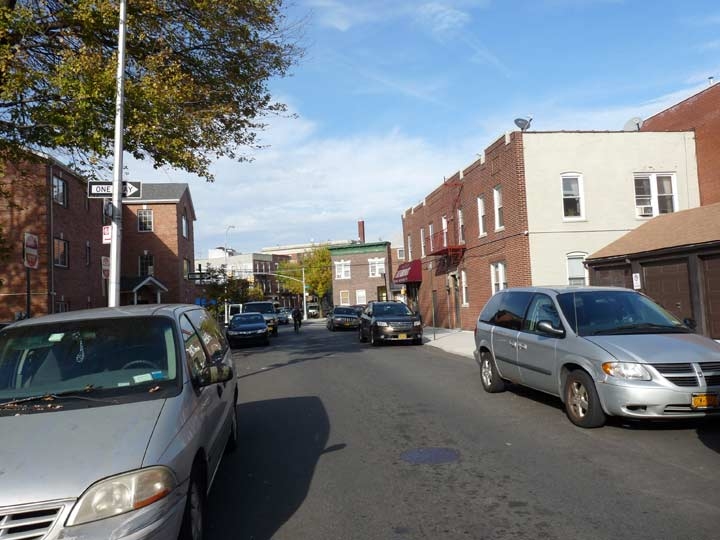

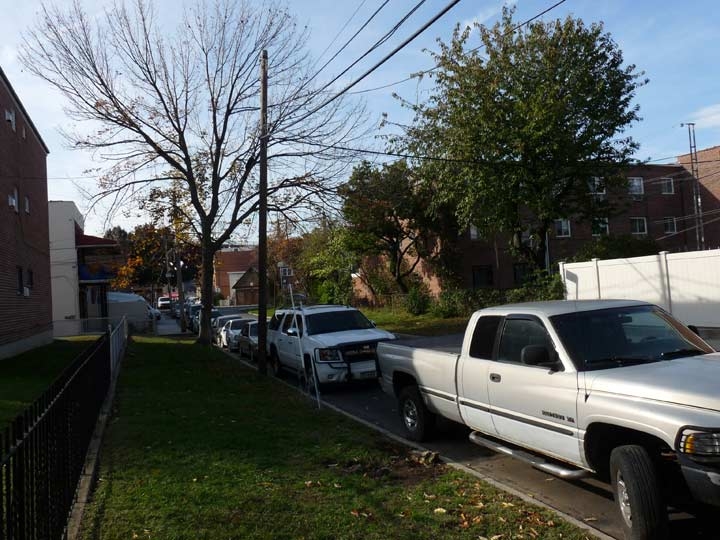
7 comments
I lived at 30-59 31 st for a good part of my young days. Dad was pastor of second reformed church and I remember the greek orthodox church stated by holding services in the basement of the reformed church. we moved to homecrest presbyterian church in brooklyn in 1948. been many years since have been in astoria but still recall it as a great place to grow up. I attended ps 5, jhs 126 and bryant hs. loved reading about the old el. thank you , george
second reformed church was the starting place of worship for the greek orthodox church on the other side of the el. the parsonage was located at 30-59 31 st and was built about the same time as the church- there was an old gas lamp in the back yard and a two step stone for ease in getting into the carriage (yes it goes back to the horse and carriage days ) I lived at 30-59 for some 18 years and watched from my window as the tri boro bridge went up. I attended ps 5 a couple blocks from our home and believe that the school burnt to the ground around 1965. I wish I could tell you when the church was built (Reformed Church should have the data) Al Costoldi restored the windows – no idea of the date – – he lived in College Point. Hope this is of some interest. g.g.
I was thrilled to recognize my grandparents’ old apartment building, which you captioned as “Old-school apartment building on 31st between 23rd Road and 23rd Avenue”! Their address, written old-Astoria style, was 23-56-31 Street, conveniently located right around the block from Bohemian Hall. They lived in that apartment from at least the 20s through the late 1960s. Possibly earlier, as my father, his brothers, and one sister were all born in Astoria in the 1910s. As children we especially admired the two horns of plenty that appear on either side of the doorway escutcheon. I would know that doorway anywhere.
To the left of the apartment building is Queens PS 85 where my father–and the Marx Brothers–went to school. We used to say that my father had been lucky because he could never be late to school. There were enormous gingko trees in the front yard of the school, planted in the early part of that century when gingkos were the rage in cities across the East Coast. I called the school about 10 years ago and was told the huge old trees were no longer there. PS 85 was built in 1907.
The apartment building is a narrow one, but extends very far back into the lot. To enter my grandparents’ apartment you went up echoing black and white “marble” steps in the lobby and then down an extremely long and narrow hall into the apartment itself. To this day I often dream about that apartment, can still see every detail clearly, even recall the cooking smell. There was a tiny 1920s type stove (green, I think), and a line of very deep tin sinks that were covered with a flat, fitted tin covering when not in use. My grandmother had enclosed the underside of the sinks with a cloth skirt. Hidden beneath were empty wax-paper milk cartons that we were given to play with. There was a dumbwaiter in the kitchen to convey refuse down to the basement. I was always told that the apartment originally had a wooden icebox, and that it was a big day when a refrigerator was eventually installed. The tiny bathroom had a pull-chain flush toilet, with wooden seat, and the small bathroom window was glazed with opaque glass that had the impression of tiny snowflakes or stars in it. Heating was from old style radiators–always pronounced RAH-dee-ate-ors–and you had to be careful not to be get too close. There were always plants in pots in the windows and on the fire escape–coleus and angel-wing begonias, even fuchsias in summer. We loved the shadowy gloom under the El. Even far back into the building we had to cease conversation when the El trains clattered past. I often wonder what the old apartment looks like now: surely renovated beyond all recognition.
My father recalled growing up there in a time when Astoria was rural, with small produce farms everywhere. He and his brothers roamed freely through the farms and vacant lots. During the Great Depression he was fortunate to get a job at a small local family-owned grocery store–I think the name was Delbert’s–and I have a photo of him as a very young man in the store, which was fully stocked with old-time merchandise at unbelievably low prices.
Bohemian Hall… Some cousin somewhere surely still has the large photo of my young grandmother in her ethnic Slavic costume, arrayed with other young women in same costume, at a dance at Bohemian Hall. I vividly remember summertimes spent playing in the city playground on the other side of the Bohemian Hall fence (I don’t remember children being allowed inside) and watching the dancing and high spirits going on under the spreading trees in the beer garden. In fact, my parents’ 1930s wedding reception was held at Bohemian Hall, and one of my sisters still has the receipt with the ethnic bill of fare.
My grandfather “built” the Hellgate Bridge and also worked later at the Con Ed power plant. My father and uncles used to swim in the polluted East River as kids–always with eyes and mouths prudently held shut–and we never got tired of hearing the story about how one of our young uncles once almost drowned, but was saved at the last moment by another young swimmer. My grandfather gratefully awarded the brave kid a quarter.
Thank you for all your research, and thanks to all commenters for sharing their memories of Astoria. I have many more family stories, will perhaps write more as time permits.
hello all astorians.. i have a group which all of u will love.. its got over 1000 photos of old astoria.. from the 1800s to the 1950s… i am currently looking for pictures or videos.. of astoria queens.. of the el.. as well asthe area.. from 1960s to 1990s..if anyone would like to see the those pictures.. as well as sharing ur own.. or even trying to reconnect.. please come join https://www.facebook.com/groups/AstoriaMemories/
how fun ! last wrote back in April ’17. Yes Delbert was the store ! also – – -Viviani grocery and Bankerts bakery also Genovese Drug Store. A great place to grow up those many years ago. Second Reformed church had a tin ceiling in the sanctuary – – still there ? Also there was an old pedal organ stored up in the balcony area that i played as a kid. The big pipe organ was a beauty and the first organist I can recall was Mr. Hansen. Kids from the church used to dress in “Dutch” outfits and march in a parade each spring and have a picnic at Astoria Park down by the Tri Boro Bridge. Remember the plane that crashed at Laguardia (1948?) – – a kid in my class at Bryant HS was in the swamps there and almost got hit by the plane. .. think his name was Jerry Katz/ plane came down on his bike.. . . Journal American bought him a new bike as payment for his story. It all seems like yesterday and at the same time it feels like million years ago .. . . . . remember when ?
Fascinating history. Enjoyed reading all the comments. Grew up in Astoria, attended PS 6 on Steinway St (now a muni parking lot), Horace Greeley Jr High & Bryant HS. Moved away in the 70’s but visit often since we have family in the area. Was curious if anyone remembers when PS 6 was torn down? I’m thinking sometime in the ‘80’s but not sure.
I attended P.S. 6 on Steinway Street back in 1951. Actually was there from First to Third grade. Mrs. DeBelis (sp), Mrs, McHugh (sp) and Mrs. Feuerstein. We lived at 1808 21st Avenue, Apt. 3G. Are there any images of
the school anywhere? Thanks so much.